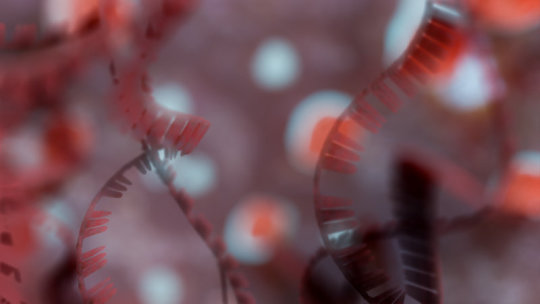HOME
Origin of life: The chicken-and-egg problem

Life as we know it is based on a complex network of interactions, which take place at microscopic scales in biological cells, and involve thousands of distinct molecular species. In our bodies, one fundamental process is repeated countless times every day. In an operation known as replication, proteins duplicate the genetic information encoded in the DNA molecules stored in the cell nucleus -- before distributing them equally to the two daughter cells during cell division. The information is then selectively copied ('transcribed') into what are called messenger RNA molecules (mRNAs), which direct the synthesis of the many different proteins required by the cell type concerned. A second type of RNA -- transfer RNA (tRNA) -- plays a central role in the 'translation' of mRNAs into proteins. Transfer RNAs act as intermediaries between mRNAs and proteins: they ensure that the amino-acid subunits of which each particular protein consists are put together in the sequence specified by the corresponding mRNA.
How could such a complex interplay between DNA replication and the translation of mRNAs into proteins have arisen when living systems first evolved on the early Earth? We have here a classical example of the chicken-and-the-egg problem: Proteins are required for transcription of the genetic information, but their synthesis itself depends on transcription.
LMU physicists led by Professor Dieter Braun have now demonstrated how this conundrum could have been resolved. They have shown that minor modifications in the structures of modern tRNA molecules permit them to autonomously interact to form a kind of replication module, which is capable of exponentially replicating information. This finding implies that tRNAs -- the key intermediaries between transcription and translation in modern cells -- could also have been the crucial link between replication and translation in the earliest living systems. It could therefore provide a neat solution to the question of which came first -- genetic information or proteins?
Strikingly, in terms of their sequences and overall structure, tRNAs are highly conserved in all three domains of life, i.e. the unicellular Archaea and Bacteria (which lack a cell nucleus) and the Eukaryota (organisms whose cells contain a true nucleus). This fact in itself suggests that tRNAs are among the most ancient molecules in the biosphere.
News Source